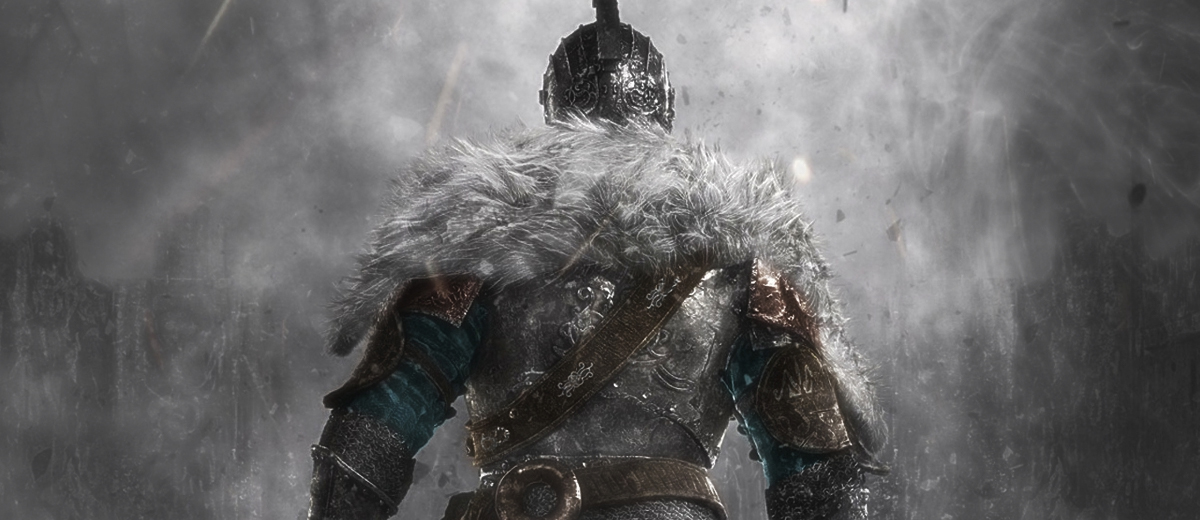

Dark Souls 2 is a difficult game. Yes, the ‘Souls’ franchise IS difficult by nature, but no, this is a difficult game to review.
It’s remarkable just how much Dark Souls had changed over the course of its launch to the PTD (Prepare To Die edition, the final form the game had taken) launch. The game was a completely different species by the end. First time players and reviewers were jumping into a terribly unforgiving game with brutal, brutal difficulty. Online wasn’t as popular, stats were different, soul drops were lower, humanity drops were even lower. The PTD patch had changed a lot of things, and having started off playing the post-patch edition (and beaten it twice), I found myself stuck only a few hours into the pre-patch. Guides were something of a myth, YT personalities like EpicNameBro and Vitya weren’t so prominent and reviewers talked about the infamous ‘chain of pain’ email that they so desperately relied on (the article that details this struggle is absolutely fascinating, and is yet another example why Dark Souls was so remarkable at the time). I have no doubt Dark Souls 2 will face a similar evolution.
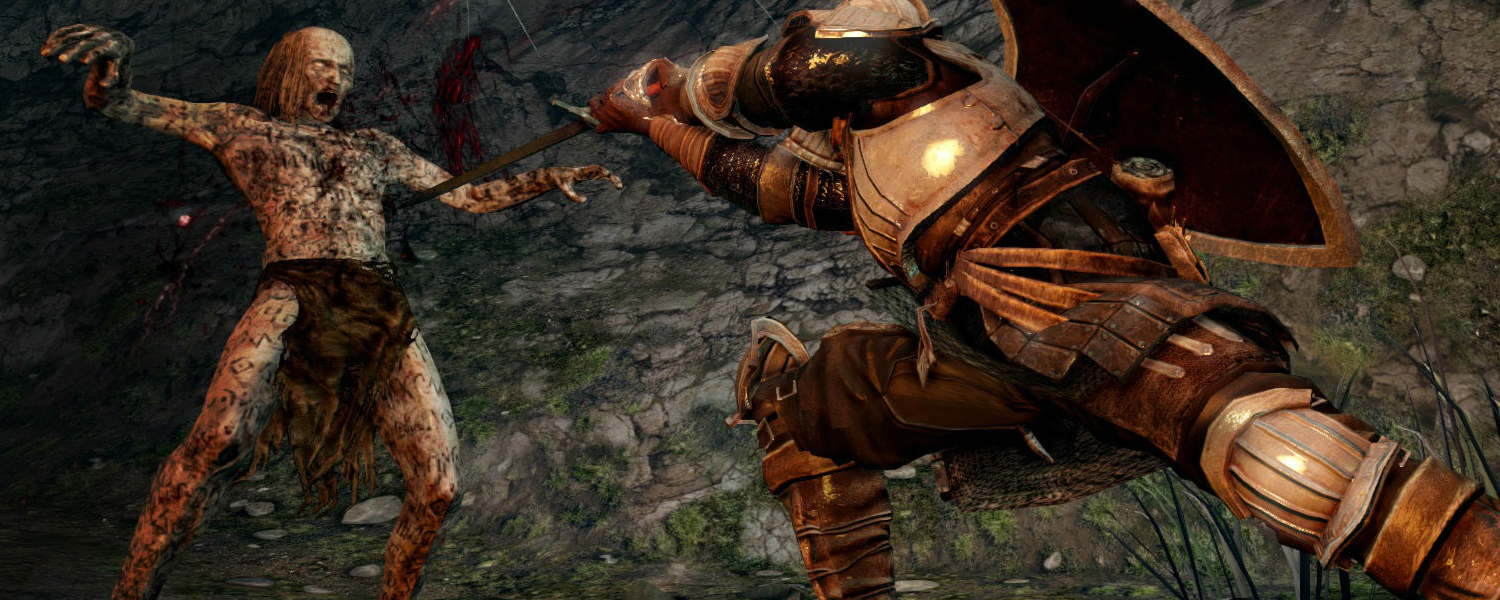
We have also confirmed that Dark Souls 2 New Game+ will be a nearly completely different experience to the first playthrough, and not only that, it will drastically affect the lore. Obviously the NG+ option is a part of Dark Souls that is so large that it’s considered criminal to ignore it, but again, this review only touches upon the first playthrough, as I had struggled to finish the game in time for release. In this light, I urge you to read this as more of a guide of whether you should buy it or not (and relative to your previous experiences with Souls games) and more of an exploration of the game and the base mechanics, and less of a detailed intrinsic analysis and exploration of the more advanced nuances of DSII, which is something I will definitely do a couple of months down the road.
as of review, the Dark Souls II online servers are not activated. Unfortunately another crux of the Souls series cannot be touched on here (or in most, if any reviews) because it’s simply not activated for us. Thus the online part of the game, some would say the best part of the series, is not reviewed here. Does this make my review not worth reading? Of course not, I’ve spent hours upon hours with both Dark Souls before patch and Dark Souls PTD, with Demon’s Souls, and of course, with this instalment. But as always, you must take this review with a grain of salt because the Souls franchise is far more unique than other games. A playthrough or revisit of DSII in 3-6 months time would prove far more beneficial than just playing now and ignoring it for the next year. Without further ado, let us prepare to die.

The world of Drangleic is the story. Well, there is an official story, which involves the player trying to find a cure for their curse, while not directly set after Dark Souls, it is aesthetically linked to it. No, outright handholding with storytelling was never the point of Dark Souls. To really invest in it, one must go and find a story. The world of Drangleic is full of information, and while the dialogue and cutscenes are minimal, they do enough to convey what needs to be said (most cutscenes are dedicated to introducing a boss that will in all honesty kill you). Item descriptions, level design, NPC’s are around for the journey and to help you get to know the world of Drangleic a bit better, but it’s a story that doesn’t present itself outright, and doesn’t feel like it needs to.

Dark Souls 2 is something of a mixed bag in terms of visuals. Escaping the barren tunnels and oppressive landscape of the tutorials and into the sun drenched hub of Manjula is as breathtaking as taking your first steps out of the vault in Fallout 3. Without a doubt, Dark Souls 2 carries some absolutely breathtaking environments. Each area carries a distinct personality and some areas absolutely astound, with breathtaking visuals of delightfully decrepit forests or of gorgeous castles, which quickly lead to fear as you encounter the incredibly deadly enemies that haunt these places. The new engine is fascinating on a physics perspective: right off the bat you’ll notice the gorgeous cloth physics that affect the armour and clothes you wear, as you walk and sprint down a corridor and the tattered robes of your armour wave and flow behind you, you’ll notice the immediate upgrade from the first game.
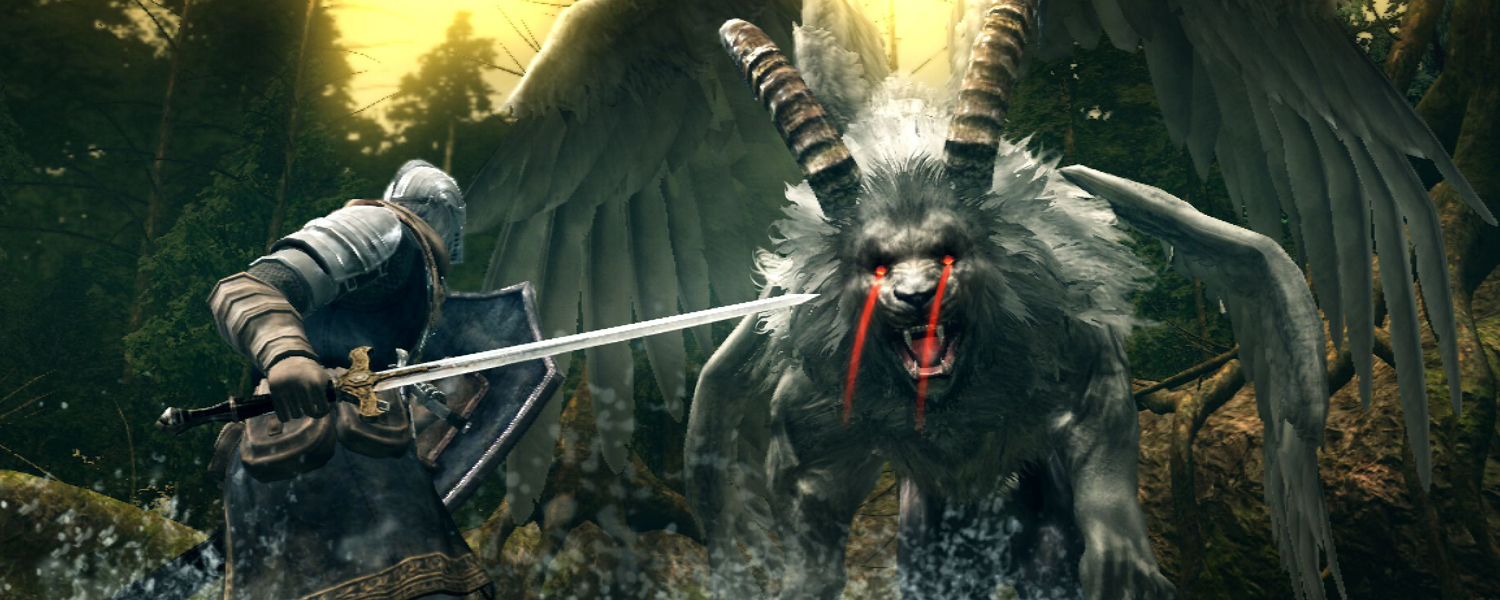
The lighting engine is also fairly solid: holding out your torch to light a dim cave or slowly creeping down a corridor with a slowly depleting light source looks gorgeous. Even the simple act of lighting a bonfire is remarkable and memorable: something that will reinvigorate your joy and hopefully motivate you to trudge onwards through the dark dangerous world of Drangleic. Unfortunately, the differences between pre-release and the final review copy are perplexing. From Software had stated that the torch would be a necessity in certain areas, having to choose between having a light source or shielding yourself, yet there was no area that necessitated the NEED of a light source. Sure, places were dark and dim, but they were manageable without a torch.
Up close the visuals are pretty unimpressive. Rough edges and the graphics engine is quite old. Yes, From Software know how to pull off a unique aesthetic and memorable environments, but the outdated visuals hit hard, and the frame rate, while steady, does tend to chug heavily. If anything, I remain very excited for the PC release to see if the same problems will remain or disappear (though comparison videos have shown that the E3 demos were most likely run on PC’s).

Those of little faith and the legions of people who cried in horror when From Software stated the game would be more accessible and easier can rest easy. Dark Souls 2 is possibly the hardest instalment of the series so far, and sometimes not for the right reasons.
Dark Souls 2 feels very much like Demon’s Souls, rather than a sequel to Dark Souls. The UI for instance is very reminiscent of Demon’s, every death will knock off your health bar permanently and the level up system happens through one lady instead of at bonfires. The now trademark trial by fire combat is not only maintained here, but upgraded and near perfected. The controls have been tightened so you can’t blame the sloppy controls for your cause of death anymore (something very prevalent in the first). While death very much remains part of the journey, it’s a shame that such a harsh punishment is given with each death: a decent portion of your health bar goes down with each death up to 50% total, unless you use a Human Effigy, something that is very rare throughout the first third of the game. It doesn’t make sense to punish you so harshly for trying to learn from your mistakes, while some people can see it as motivation to NOT fail. Regardless, I found the penalty to be quite harsh.
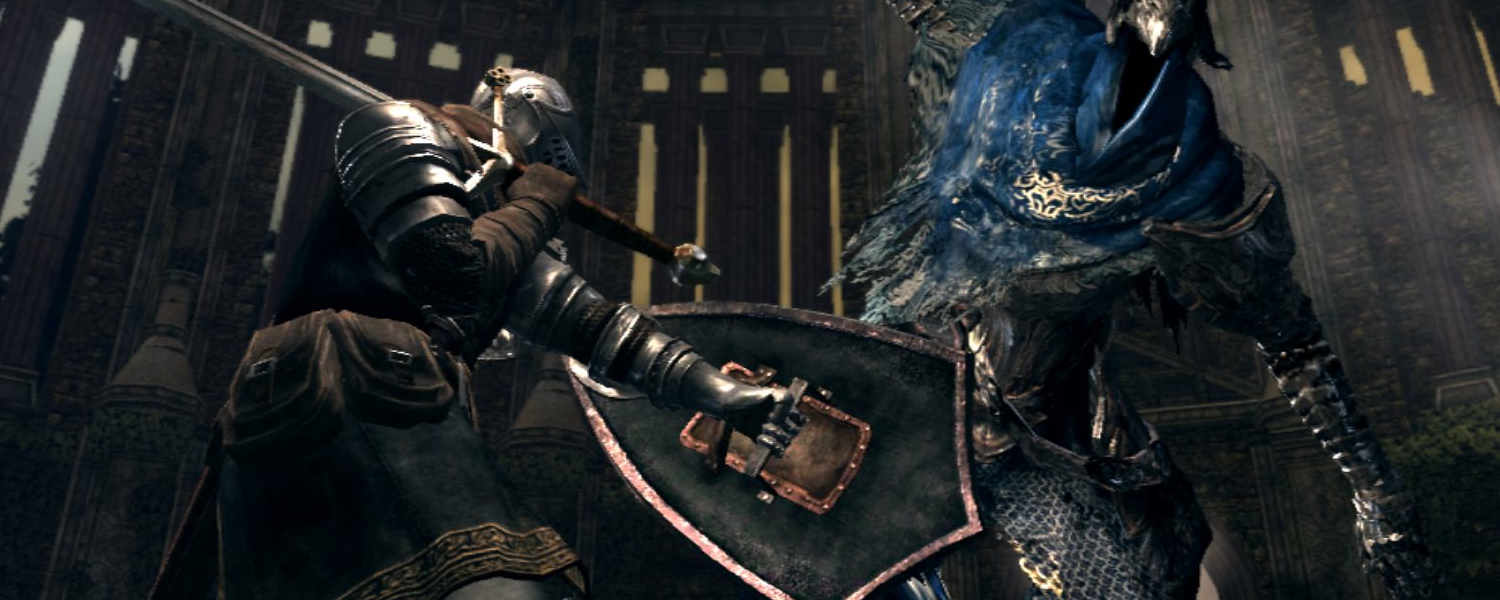
In terms of actual combat, yes, it is amazing. Dark Souls II is a finely crafted puzzle of observing enemy patterns, and countering said patterns with carefully placed strikes and precision damage. Having to learn the speed and strength of your weapons is essential: a sword swing too slow is the difference between life and death. Having to pick the right weapon for the right situation is more necessary than ever, and the new 3 weapon limit (six with both hands) is a welcome addition. Dual wielding is a viable option now, sacrificing defence for more damage, and it’s thrilling to quickly change to dual swords, deal some lethal damage and quickly retreat with shield back on hand. Dark Souls II is unforgiving, and From’s attempts to one-up its predecessor is fairly evident: crowd combat is now a common thing, and is incredibly hard to come out of unscathed. Having not only to dodge and counter one enemy, but 3 or 4 is a dance of death that you may very well come out the losing side of many many times. It could be seen as difficult bordering on unfair, but no, death is never the game’s fault, it is only through the player’s failure that they can learn and adapt.
While many people tended to stick to one build and go with it, in Dark Souls II it’s encouraged to experiment with ranged, magic and bigger weapons. Ranged weapons can be used while moving (a huge tactical advantage) and every move now uses stamina (including magic). Having a giant weapon can trigger an execution move, while using daggers can trigger bleeding. Yes, great care has been given to the weapons system, and it’s here where Dark Souls II shines.
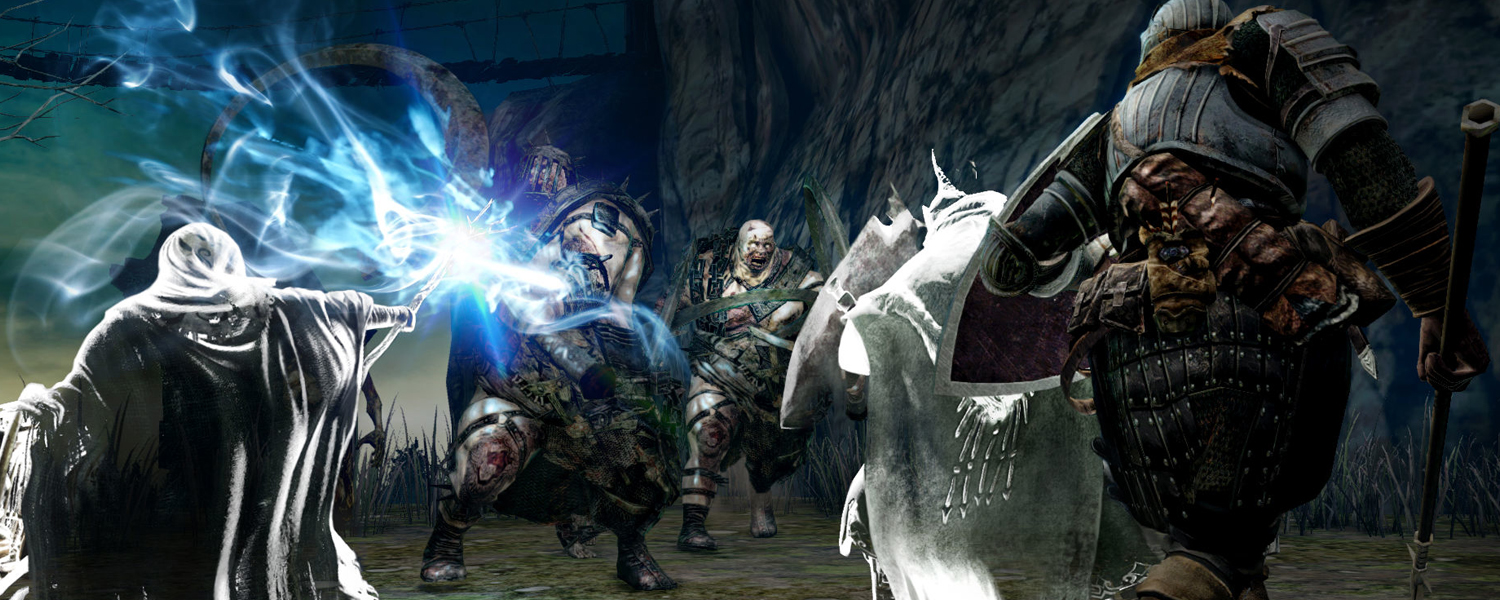
Stamina was always important but in Dark Souls II it’s so essential you’ll pool many points to raise the bar. Stamina depletes even quicker then previously, and taking hits and dodging will quickly see your stamina drain to nothing, leaving you open to a deadly attack. The concept of parrying and backstabbing are essentially the same, with slightly different timings depending on the weapon sets you end up using. Weapon degradation now happens at an alarmingly fast pace, but this is remedied by being instantly fixed as soon as you rest at a bonfire; a change that I found quite confusing and arbitrarily pointless. Healing items are more plentiful, and the trademark Estus flask is also readily available.
It’s the small things that make Dark Souls II a better experience: travelling between bonfires is now available right from the start and the item box is automatically given to you. Having the option to travel between any bonfire that had been unlocked was a great way to revisit past areas, and a great way to encourage repeat exploration and certain grinding exploits (something that is curbed sometime towards the endgame) without having to trudge through the same paths over and over. Yes, Dark Souls II is more accessible and it’s all for the right reasons. The difficulty is crushing, but it’s always surmountable. While there was nothing like Ornstein or Smough (solo) here, each fight is a reward or punishment in itself.


